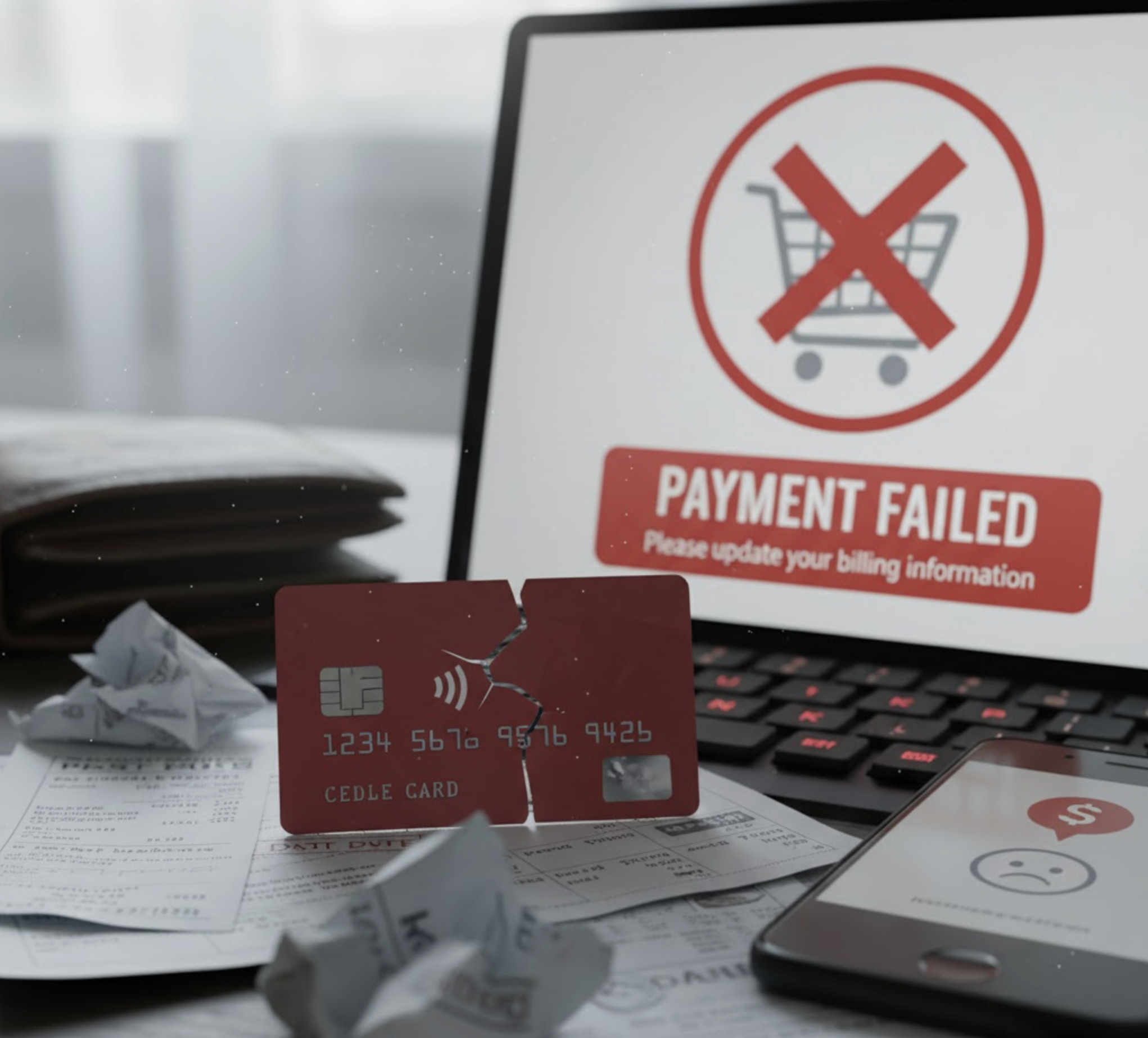

In the fast-paced world of eCommerce, every transaction counts. Yet, one of the most frustrating scenarios for any Shopify store owner is when a customer’s payment fails—right at the finish line. These failed payments, often caused by expired cards, insufficient funds, or simple technical glitches, can lead to lost sales, broken trust, and frustrated customers. The good news is that Shopify gives you the tools to recover those lost opportunities. With a solid failed payment recovery strategy, you can turn abandoned checkouts into completed sales—and sometimes, even increase customer loyalty along the way.
This guide will help you understand how failed payments happen, why they matter, and how to set up effective recovery systems in Shopify to ensure your business doesn’t lose revenue unnecessarily.
Before diving into recovery setups, it’s crucial to understand the root of the problem. Failed payments aren’t just random—they happen for a variety of reasons related to customers, banks, and systems.
Some common causes include:
Understanding these reasons helps you craft a more effective recovery approach. For instance, you might use automatic reminders for expiring cards or send friendly notifications when a transaction doesn’t go through.
Failed payments aren’t just about a single sale lost—they can affect customer trust. If your checkout or payment system appears unreliable, even a loyal buyer might hesitate to return. That’s why proactive recovery isn’t just a technical fix—it’s a customer experience strategy.
Recovering failed payments directly impacts your store’s bottom line. Many businesses underestimate just how much potential revenue disappears because of payment issues. Studies show that 7–15% of recurring transactions fail monthly, and without a system to recover them, that’s a lot of money left on the table.
Here’s why recovery is essential:
It’s not just about regaining one sale—it’s about protecting long-term trust and ensuring your processes look professional at every step.
Now let’s get practical. Shopify has built-in tools and integrations that make recovering failed payments much easier. The setup can differ slightly depending on your store type—whether you run one-time purchases, subscriptions, or pre-orders—but the foundation remains the same.
Shopify can automatically notify both you and the customer when a payment fails. To set this up:
Tip: Avoid sounding robotic or pushy. Personal tone and reassurance make it easier for customers to take quick action.
If you’re managing subscriptions or recurring payments, Shopify’s billing system (or apps like Recharge or Bold Subscriptions) can automatically retry failed transactions.
You can configure retry intervals such as:
This automation ensures that temporary issues—like insufficient funds—don’t become permanent lost sales.
It’s good practice to send short, polite notifications before each retry attempt so customers know what’s happening. Transparency builds trust and often increases the likelihood of a successful payment.
You can include a direct recover payment button or link in your emails to make it simple for customers to complete their payment in one click.
Small details like these remove friction and make the process feel smooth and professional.
Shopify Flow allows advanced users (especially on Shopify Plus) to create custom workflows that trigger when payments fail.
For example, you can:
Automation ensures consistent communication and prevents revenue from slipping through unnoticed.
If your store relies heavily on recurring payments or subscriptions, third-party apps can strengthen your recovery process. Some powerful options include:
These tools often provide insights into why payments fail and let you customize your follow-up messaging for better results.
Even with all the automation, your communication style is the key to success. When customers receive a failed payment message, they may feel embarrassed, annoyed, or suspicious. Your tone can make all the difference between recovery and losing the sale.
Keep in mind these tips:
Example email tone:
“Hi [Name], it looks like your last payment didn’t go through. It happens sometimes! You can quickly update your details or try again using the link below. If you need help, we’re here 24/7.”
This tone turns what could have been a negative experience into a professional, customer-friendly interaction.
After setting up your failed payment recovery flow, it’s essential to measure its effectiveness. Shopify provides analytics, and most recovery apps include dashboards showing recovery rates and reasons for failure.
Track metrics like:
Analyzing these numbers can reveal trends—for example, if a particular gateway or region causes most failures. Over time, this helps you refine your strategy and reduce friction points in the checkout process.
While recovery is important, prevention is even better. Reducing the chance of failed payments saves effort and ensures a smoother customer experience.
Here are a few proactive steps you can take:
Small tweaks can lead to significant reductions in failed payments—and happier customers overall.
Failed payments are inevitable in eCommerce, but losing revenue from them doesn’t have to be. Shopify’s built-in tools, combined with smart automation and customer-centric communication, can help you recover those lost sales efficiently and gracefully. By understanding why payments fail, setting up automated recovery workflows, and optimizing communication, you not only protect your bottom line but also reinforce your store’s professionalism and trustworthiness.
In the end, payment recovery isn’t just a technical fix—it’s part of your brand experience. Every recovered payment is a chance to turn a moment of friction into one of loyalty. So take the time to refine your process, make it human, and watch how even small improvements in recovery can lead to long-term growth and stronger customer relationships.


Many brands don’t realize that their conversion-focused tactics are quietly pushing customers away. Dark patterns, exaggerated claims, and artificial urgency may deliver short-term gains, but they often reduce long-term loyalty and brand credibility. Understanding these common persuasion mistakes is the first step toward building experiences that convert without sacrificing trust. Below are the most frequent persuasion mistakes that hurt trust, and how they affect customer behavior.
High-conversion stores don’t treat product grids as a simple layout decision. Instead, they design them strategically to balance clarity, speed, and persuasion without overwhelming shoppers. Below are essential product grid design best practices that consistently improve usability and conversion performance.
Below are 7 proven strategies to reduce decision fatigue on product pages and help shoppers move forward with ease.